American Samurai
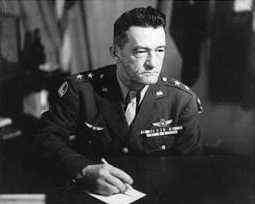
Early on the morning of March 22 Claire Chennault laid out a plan: an airfield at Chiang Mai in northern Thailand. With a surprise attack, the Tigers would catch the Japanese on the ground. Chiang Mai was more than 150 miles inside Japanese-controlled
territory, and that was beyond the range of the P-40s based in Kunming, so Colonel Kato’s 64th Senati's would not expect a visit by the Americans. The P-40s would fly from Kunming to Loiwing, China, refuel and then fly to a small airstrip
in Nam Sang, Burma, that would put them within easy range of Chiang Mai. The pilots would stay overnight and strike Chiang Mai early the next morning. Chennault chose a secondary target-Lampang, 45 miles southeast of Chiang Mai where the Japanese
reportedly based heavy bombers.
The 10 P-40s took off from Kunming at noon that same day but got lost en route. The flight to Nam Sang was postponed until the next day; that was OK for the pilots. Loiwing China was a Tiger maintenance depot that had an American club, with
a well-stocked bar.

It was 3:30 AM on the 24th of March 1942. Ten pilots walked to their P-40 aircraft from the small airfield in Burma. Three of the pilots had never flown at night before. Only one had been to Chiang Mai. They weren’t a member of anyone’s
armed forces. If you stretched your imagination maybe the Chinese Air force. They wore Colt revolvers and leather jackets. It was cold as they primed the 1700 cubic inch Allison (division of GM) engines. Turned the mixture to full rich. Switch
on. Heel on the starter and then toe to engage. Some backfired and they hoped the engines would not catch fire. Crew chiefs stood by with fire extinguishers. The navigation lights were on and they could see each other by their glow on the wing
surfaces. Trucks turned on their lights and lanterns were lit to mark the runway.
The V-12 Allison’s roared to life.
The Tigers taxied down the small packed dirt runway. There were 500 rounds of ammo for each of the four .30 caliber browning wing guns. 380 rounds for each of the two .50 caliber Browning machine guns in the nose.
Neale was the first off at 0555 hours, and Charlie Bond was a minute behind. Boyington (later called Pappy) was next, and then Bartling, one who had never flown at night. Rector and McGarry, who were to fly top cover, took off after the other
four. Newkirk's flight took off right behind.
There was no moon; it was pitch-black.
They were flying a heading of 150 degrees straight towards the Chiang Mai valley at 10,000 feet using only time and direction as navigation aids in a light rain.
Charlie Bond made the call and they broke out of the haze over Doi Suthep at 0712 hours. Beneath their port wings, at a fifty-degree angle, lay the city of Chiang Mai, with the airport at the southwest corner.
At 1,000 feet, Bond fired a long burst from his guns making sure they would fire. Ahead was their target: one of the biggest concentrations of Japanese warplanes in Southeast Asia. Commanding officer and Ace Lieutenant Colonel Tateo Kato
Newkirk's flight had reached Chiang Mai 5 minutes earlier. For some reason or other, while flying down to attack Lampang, they decided to strafe the Chiang Mai railroad station. That alerted the Japanese and blew up the train station.
Bond dove and opened fire. Bob Neale was right behind Bond, and he fired on the same row of aircraft on the field's east side. All enemy planes were turning up, and the pilots and crews were running around their planes.
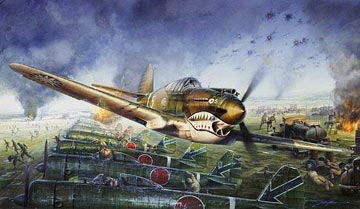
Bartling was the last in line and had a good view of what was happening. "All four of us strafed a very closely packed line of fighters with three twin-engine ships in the center.” He also saw Japanese pilots sitting in their cockpits, "…
props turning up … and quite a few men laying flat in front of the planes." At the end of his pass, Bartling climbed steeply to 500 feet where he flipped the P-40 around in a wingover and came back over the line he had just strafed. Some
made three passes, some made four. They could see the pilots jumping out of their cockpits running for cover. The MG nests had opened fire and tracers were arching up trying to catch the P-40’s. AA was exploding at 1200 feet. The air was
so full of black puffs of antiaircraft fire that it was difficult to determine whether the Japanese had launched any aircraft or even to see the other P-40s.
Bond was the last to break of the attack. He realized that he had a bees nest of machine-gun fire all around him. Bond turned sharply to the right and was about to start his fifth pass when he looked up and saw three P-40s. He had been lucky
to get away with four passes; another would have been really pushing it. He climbed to join the three P-40s-Rector, McGarry and Bartling. Bond looked at his watch. The attack had lasted from 0716 to 0724-eight minutes.
There were 50 functional aircraft at the field when they got there. When they left there were only 20.
The four P-40s turned away from the airfield and headed northwest around the mountain. Bond took the lead, and Bartling joined him. Rector and McGarry were close behind. Off to the southeast, he circled until Boyington joined him. Bond's
flight of four P-40s and Neale's flight of two separately set their courses back to Nam Sang.
There was smoke coming from McGarry's engine, and he was losing altitude. The Salween River was just ahead. If McGarry could get to the Burmese side his chances of survival would improve. Suddenly, the P-40 rolled over, and McGarry dropped
out. He was about 1,000 feet above the trees when his parachute opened. The P-40 nosed down, crashed into the side of a hill and burst into flames. The wreckage of his plane, found years later, is on display at the Chiang Mai airport.
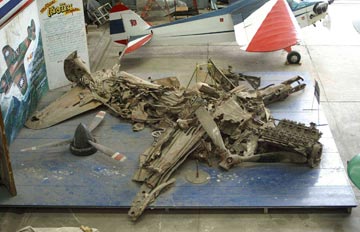
McGarry landed in a clearing 200 yards away, got to his feet and waved. The three P-40s circled slowly overhead. With flaps and gear down. Rector made a slow pass over McGarry to drop a candy bar that he kept as an emergency ration. Bartling flew over
and dropped a map. Bond put a circle on his map to mark McGarry's position and wrote the time. He flew over McGarry one last time and dropped it. All that could be done for him had been done. The flight of three P-40s turned on a heading
for Nam Sang.
As luck would have it I had visited the area where McGarry was shot down in 1968. To be sure 1968 was not 1942 but there were some similarities. The population there is not really Thai. They are Tai Yai and hill tribe people. The hill tribe
people were on anybodies side who was not Burmese. Hence they were loyal to the British in 1941 or the Japanese a little later. The politics of the area are so confusing to be almost meaningless to discuss given the opium warlords and such. The
lore or history whichever one believes says McGarry wandered around the Jungle for 28 days with only a candy bar and a 38 revolver till the Thai Police captured him.
I can almost guarantee you that didn’t happen. First off, Thai police didn’t speak the language in that area. And second, people up there rarely talk to cops. At least they didn’t when I was there. As late as the 1990’s
they were still finding mass graves of the Japanese soldiers who the hill tribe people killed. Karen tribes killed 12,500 retreating Japs in 1943. The local kids, short on cash would siphon off gas from the Japanese trucks. When caught the soldiers
would make the thieves drink the gas until they died. No love lost there.
Of course there were some towns that accepted the Japs with open arms. One lady, a Mrs. Kaew
Chantasima even married one. She is the only known example of a Japanese marrying a Thai woman during WW II. He didn’t stay of course and invented a story about his death to get home but at least she tried.
100,000 Japanese died in the Burma campaign.
They had a sign up that read, “Mosquitoes are more dangerous than tigers.””
It’s my guess that McGarry hooked up with a hill tribe lady and got caught playing the field. It would not have been unusual to find a whole village of women as the men frequently went off to fight or transport opium. Whatever the
reason he ended up being interrogated by Lieutenant Colonel Tateo Kato. It is really too bad Kato didn’t get the interview on film. It would have been a classic. Kato didn’t speak Thai or English. His Thai liaison officer spoke Japanese
and another Thai officer spoke French and a French cook spoke English, maybe. Here’s the scene. Col Kato is in his office eating lunch. He is yelling at the French cook for putting holy basil in the Sushi. Bill McGarry is sitting there
trying to figure out what the Jap is saying. The Jap is screaming at the cook and McGarry in Japanese. Another officer is screaming at the American in French. McGarry is a little fuzzy from hill tribe moonshine and too much sex. The cook gets
an idea. He tells the Liaison officer he speaks English. This gets Kato off the cooks back.
The Colonel tells the Thai officer in Japanese to ask McGarry which base he flew out of. The Thai officer tells the other Thai officer who asks the cook in French to ask McGarry where he came from. The cook asks him what he wants for lunch.
Looking at the sushi packed with holy basil and remembering his experience with hill tribe food he says he is not hungry. The translation goes from English to French to Thai to Japanese and the Colonel, sputters, “What do you mean you are
not hungry?” This is of course translated back down the chain and the American is beginning to think he was better off with the hill tribe lady even though she threatened to cut off his penis.
I bet you think I am making this up. You may have forgotten that Thailand was still Thailand in 1941. The Japs had the same problems you and I do every day trying to understand just what the hell the Thais are doing or thinking or saying.
Kato kept up the interrogation for an hour or so with no results and McGarry was sent to a prison compound in Bangkok. He should have been sent to a prison camp building a railroad but he ended up in Bangkok in a Japanese controlled compound with
Thai guards. The fix was in someplace. His hill tribe lady may have had second thoughts or he befriended an opium war lord or something. But whatever happened he only stayed in Bangkok for a year or so and then mysteriously appeared in an American
submarine then a PBY and was flown to Calcutta India.
That really should be the end of the Colonel Kato story. But if General Chennault had a nemesis it was Kato and visa versa.

Kato had done well up until he met Chennault. He was from a military family and his father was killed in the Japanese Russian war. He had shot down nine enemy planes and even captured two British Hurricane fighter planes undamaged. He painted them white
and flew one himself for a while. He had planned to use them to raid British bases in Burma. He wanted to fly into the base, the Brits thinking he was one of theirs and then shoot up the airfield. But it wasn’t to be. On that morning in
Chiang Mai, Chennault’s Flying Tigers shot anything on the ground and Kato’ two Hurricanes happened to be on the ground. He was Japans most famous fighter pilot at the time and a commander as well. He walked the walk and talked the
talk. He flew missions with his men as well as planning them.
When he met the Tigers his luck changed. He should have realized with the unsuccessful interrogation of McGarry that something was changing.
That morning the Americans had dealt his squadron the most damaging blow of the war so far and Kato was angry.
He was down to 18 fighter planes. He found the base that the Tigers had taken off from and attacked. The plane that he planned to have fly top cover screwed up and joined in the attack. You guessed it. The Tigers weren’t on the ground
they were up above waiting for the Colonel.
Kato and his boys got shot up again. Kato made it back to Chiang Mai but barely – his plane full of holes and a number of his veteran pilots wounded or dead.
Now personal injury had been added to insult and he planned a revenge attack. 12 fighters started down the runway. It didn’t go well even from the first. One of his ace pilots ran into one of their own bombers parked at the side of
the runway and his two wingmen cracked up too.
But this was a battle of blood and they continued on. Kato had thought he had pretty well destroyed the Tigers on the ground on his last attack even though his squadron took a pounding. Not so.
But this time he surprised the P-40’s. He flicked off his navigation light switch and went in for the attack. Nothing happened. He flew the length of the field and the folks on the ground just stared up at him. He had flipped the wrong
switch and instead of his lights going out he had turned off his gun switch.
He decided to go back that afternoon and finish the job.
He took nine fighters to attack. He only managed to get back to Chiang Mai with five. Tigers 4 Kato 0. He had lost again.
Kato moved his remaining aircraft into Burma to follow up the Japanese advance. Burma was not a very hospitable place during the rainy season. Kato along with most of his men had Dengue fever. They were short on food and were down to eating
eggplant boiled in saltwater for breakfast lunch and dinner. Kato was 39 years old. The Brits were bombing their base of operations. Kato and four other fighters took off after them.
The Blenheim was a twin engine bomber. It had a turret behind the cockpit with twin Browning .303 cal machine guns and around 800 rounds of ammo. The plane was flying at wave top level after completing its bombing mission. The Blenheim also
had guns in the nose.
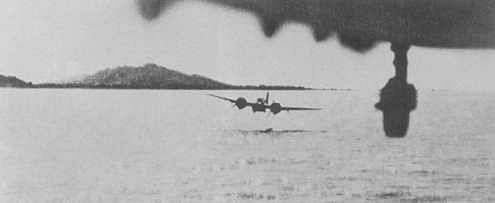
Sergeant Yasuda was the first to attack the lone British bomber. The rear turret gunner, Sergeant McLuckie waxed him. It was the first time McLuckie had fired his guns in anger. Going through McLuckie’s head? Short bursts, short bursts or you will
melt the rifling out of the barrel. Short bursts or you’ll run out of ammo. Lead him. Shoot where he is not. Lead him just right. Ignore that hot lead crashing by you. Hands sweating he grabbed his gun grips again. Capt. Otami, was next
and McLuckie shot holes in his fuel tank causing Otami to go back home. Kato had watched this performance and decided to go in and finish the job himself. What was he thinking about? He had dengue fever and only eggplant to eat for days. War is
not that hard. It is the other stuff in war that is hard. Sickness, hunger, emotion, pain. Kato had done this before. His best angle of attack since he couldn’t get under the bomber was to come in from the tail. He made his first pass but
missed and as he pulled up McLuckie got him in the belly of the plane and set him on fire. He could feel the heat. He knew his legs would be burning in seconds. Kato looped, waved goodbye and crashed his Hayabusa into the sea at 200 mph.
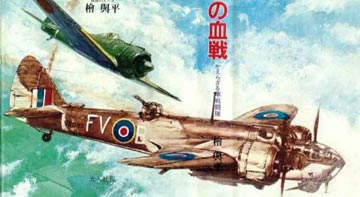
McLuckie became a hero and Kato became dead. The other two Japanese rather than chance it against the Brit gunner hightailed it back to their base. Japan posthumously promoted Kato two grades to Brigadier General and War god. The Blenheim returned to
India unscathed.
In the next exciting edition find out if there were Flying Tigers fighting in Thailand, Vietnam, Laos and Cambodia during the Vietnam War. Find out if Chiang Mai Kelly flew with the Flying Tigers. Find out if an Irishman really wrote the
Japanese National Anthem.
Stickman's thoughts:
I'm not a big history buff so no comments from me.



